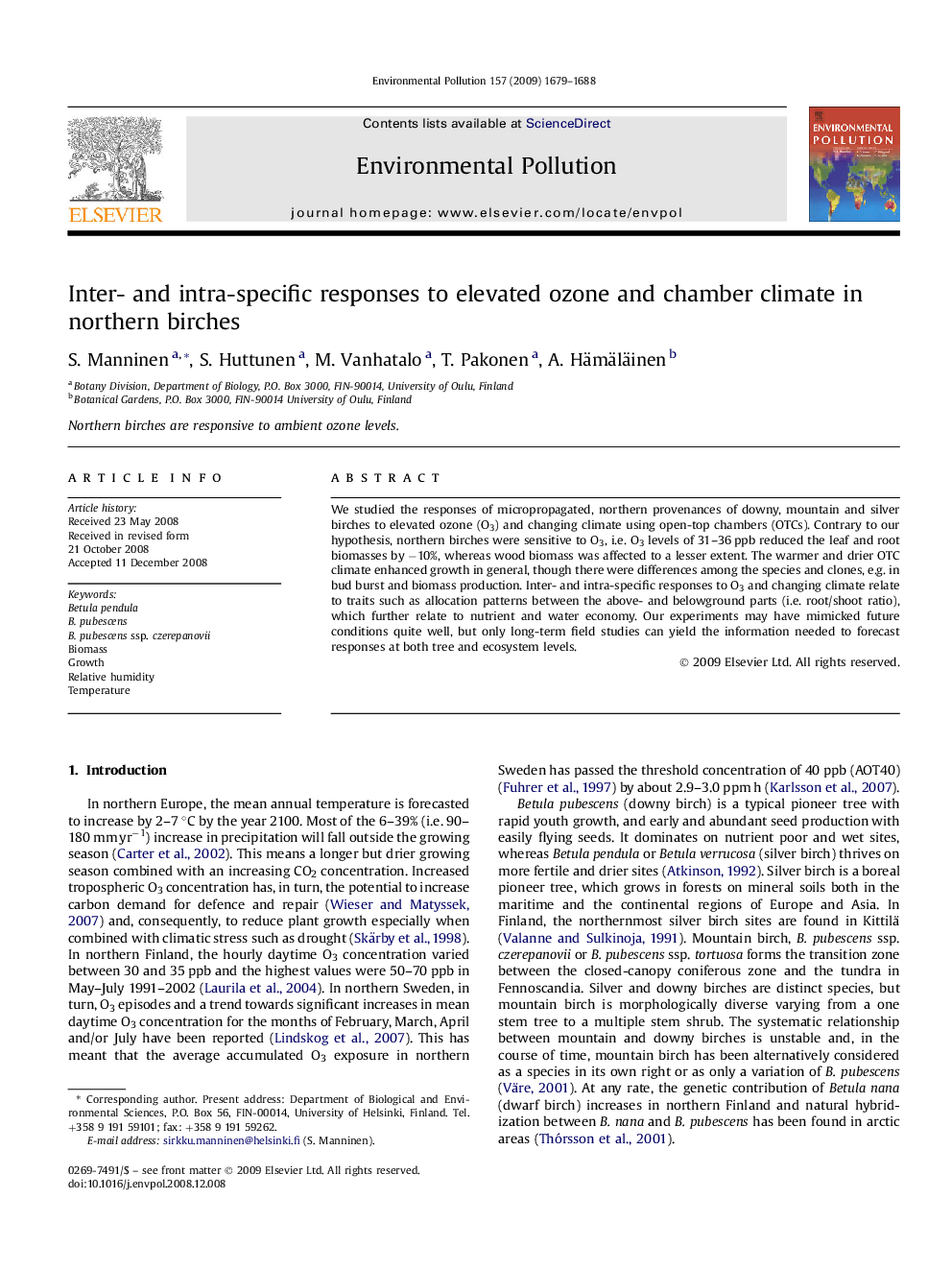| Article ID | Journal | Published Year | Pages | File Type |
|---|---|---|---|---|
| 4425715 | Environmental Pollution | 2009 | 10 Pages |
We studied the responses of micropropagated, northern provenances of downy, mountain and silver birches to elevated ozone (O3) and changing climate using open-top chambers (OTCs). Contrary to our hypothesis, northern birches were sensitive to O3, i.e. O3 levels of 31–36 ppb reduced the leaf and root biomasses by −10%, whereas wood biomass was affected to a lesser extent. The warmer and drier OTC climate enhanced growth in general, though there were differences among the species and clones, e.g. in bud burst and biomass production. Inter- and intra-specific responses to O3 and changing climate relate to traits such as allocation patterns between the above- and belowground parts (i.e. root/shoot ratio), which further relate to nutrient and water economy. Our experiments may have mimicked future conditions quite well, but only long-term field studies can yield the information needed to forecast responses at both tree and ecosystem levels.
